Secret War: How the Communists won in Laos against the will of the United States
History The coming of communists to power in Laos is very similar to the scenarios of the development of events in the postwar years in most countries of the region. On the basis of the anti-Japanese partisan movement, the people's liberation forces were formed, which already in the post-war period took part in the fight against the colonialists, and then against the postcolonial regimes. However, before going directly to the history of the civil war in Laos and the coming to power of the Communists in the country, it is necessary to briefly describe what Laos represented on the eve of the Second World War and in the first post-war years.
The country of a million elephants and a white umbrella
Like many other states of Indochina, Laos has a long and interesting history. The territory of modern Laos in ancient times was inhabited by Khmer-speaking tribes, who retreated partly to the south, partly to mountainous areas in the VIII-X centuries. AD, when more numerous and warlike tayyazny peoples migrated from the north to Indochina. The early history of Lao and Tai is almost inseparable - the languages of the two peoples are close to each other, as is the culture. However, in the XIV century on the territory of Laos, the first state of Lao tribes - the Principality of Lansang (Lansang Homkhao - "Country of a million elephants and a white umbrella") appeared. Its first ruler was Fa Ngum, during which Theravada (southern) Buddhism was adopted as the official state religion in the principality. For centuries, Lansang became the subject of aggressive interest from the more powerful neighbors - Vietnam, Burma and Siam (Thailand). With varying success, the kings of Lansang succeeded in fighting off the invaders, but sometimes either Burmese or Siamese troops invaded the territory of the state and the kings escaped into the jungle. In the end, at the beginning of the 18th century, Lanzang split into three independent kingdoms - Luang Prabang, Vientiane and Tiampasak (Champassak). They were in a vassal relationship with Siam.
When Indochina became the subject of the colonial interest of the European powers, the lands of Laos initially did not interest either the British or the French colonialists. This backward region was devoid of access to the sea, covered with impassable forests, mountainous. During the XIX century, almost all the neighbors of the Lao kingdoms, except for Siam, came under the authority of the European powers. Great Britain conquered Burma. France gradually subordinated its influence Cambodia, South and North Vietnam. Since the states that formed on the territory of the collapsed Lansang paid tribute to the Vietnamese at one time, the inclusion of Vietnam into the French colonial empire automatically ensured France's sovereignty over the former tributaries of Vietnam, including the Lao kingdoms. At the end of the XIX century, France considered the question of the possible accession of Siam to its colonial possessions in Indochina. In this context, the prospects for the colonization of the Lao kingdoms already looked different, since the seizure of the territory of Laos seemed to be one of the priority measures in the direction of advancement to the cherished Siam. In July, 1893, the French navy approached Bangkok. Siam had no choice but to concede to France those lands to which the latter put forward territorial claims. That was how the French rule over the territories east of the Mekong River was established. After 11 years, in 1904, the second Franco-Siamese conflict ended with the next territorial concessions - Siam transferred the districts of Sainabouly and Tyampasak to France. So in the hands of France was virtually the entire territory of modern Laos. From the plans for the colonization of Siam, Paris refused, not wanting to interfere with the UK. As a result, Siam retained political independence, but the rest of Indochina was divided between the two colonial powers.
Since the plans for the colonization of Siam were violated, Laos no longer interested in the French colonial administration so seriously. The poor region without an outlet to the sea, with an undeveloped economy and medieval order, was actually "mothballed." The kingdom of Luang Prabang and the principality of Tyampasak became French protectorates, the other part of Laos came under direct colonial control. 11 provinces were created, led by French residents. The High Resident was based in Vientiane and reported directly to the Governor-General of French Indochina, whose headquarters were in Hanoi (Vietnam). At the same time, the protectorates and the provinces possessed a certain autonomy in internal affairs, since the French colonial administration did not feel any particular desire to establish educational, medical institutions or control justice and law enforcement activities in subordinate territories.
This governance structure Laos maintained until World War II. The French Vichy Collaborative government allowed Japanese troops into the territory of French Indochina. 9 March 1945, when the collapse of Hitler Germany was evident, Japanese forces overthrew the French colonial administration. 4 April 1945, the king of the kingdom of Luang Prabang, Sisavang Wong proclaimed the political independence of Laos from France. It was an initiative of the Japanese, who were thus hoping to make the new puppet state dependent on Tokyo. By this time, the Lao Issara (Free Laos) patriotic movement was already operating in Laos, which advocated achieving political independence of the country, both from the Japanese invaders and from the French colonialists. The reign of the king of supporters of "Lao Issara" did not suit, because they saw in him the old puppet of colonialists, who had flipped over to the Japanese side during World War II.
"Red Prince" and the struggle for independence
By the time of the events described in Laos, the popular communist movement had not yet been formed. The leadership of the patriotic forces was also in the hands of princes from the royal dynasty, dissatisfied with the domination of the colonialists. At the head of the movement "Lao Issara" stood three princes - Petsarat Ratanavon, Souphanouvong and Souvanna Fouma. Prince Petsarat Ratanavon during the years of Japanese occupation in 1942-1945 served as prime minister of Laos. However, after the capitulation of Japan, he, unlike King Sisavang Wong, did not support the idea of returning to the French protectorate and called for the complete independence of the Laotian state. October 8 1945, Petsarat was elected honorary chairman of the expanded committee of Lao Issara, and Prince Souphanouwong took direct control of the movement. This man for many decades has become one of the leaders of the Lao national liberation movement. The role of Prince Souphanouvong in the liberation of Laos from colonial dependence and the establishment of the communist government in power is difficult to underestimate. Therefore, it makes sense to briefly talk about him.
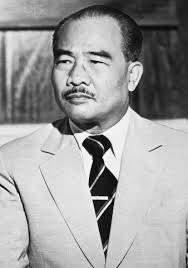 Prince Souphanouwong was the youngest of 22’s sons of Prince Bunhong, the last uparat (viceroy) of Luang Prabang. He was born in 1909, and, unlike his half-brothers, he was the son of a viceroy and an ordinary, commoner, Laotiana. However, aristocratic origins allowed Souphanouvong to get an education - first at a college in Hanoi, and then in France itself - at the Paris School of Civil Engineers. It was during his studies in the metropolis that Sufanuvong became acquainted with European socialist teachings, including Marxism. After returning to Indochina, the prince got a job as an engineer in the Department of Public Works and worked for a long time in the city of Nyachang on the territory of modern Vietnam. There he married Vietnamese and established ties with the Vietnamese communists. Becoming an ally of Ho Chi Minh, Souphanouvong was directly involved in the Vietnamese revolution. After the release of Laos from the Japanese, the prince returned to his homeland, and on October 8 of the year 1945 headed the expanded committee of Lao Issara. Two weeks later, on October 30 1945, he was appointed commander of the Lao Liberation and Defense Army. The Lao Issara Center and the headquarters of the Lao Liberation and Defense Army these days were located in the city of Thakhek in Central Laos, on the border with Thailand.
Prince Souphanouwong was the youngest of 22’s sons of Prince Bunhong, the last uparat (viceroy) of Luang Prabang. He was born in 1909, and, unlike his half-brothers, he was the son of a viceroy and an ordinary, commoner, Laotiana. However, aristocratic origins allowed Souphanouvong to get an education - first at a college in Hanoi, and then in France itself - at the Paris School of Civil Engineers. It was during his studies in the metropolis that Sufanuvong became acquainted with European socialist teachings, including Marxism. After returning to Indochina, the prince got a job as an engineer in the Department of Public Works and worked for a long time in the city of Nyachang on the territory of modern Vietnam. There he married Vietnamese and established ties with the Vietnamese communists. Becoming an ally of Ho Chi Minh, Souphanouvong was directly involved in the Vietnamese revolution. After the release of Laos from the Japanese, the prince returned to his homeland, and on October 8 of the year 1945 headed the expanded committee of Lao Issara. Two weeks later, on October 30 1945, he was appointed commander of the Lao Liberation and Defense Army. The Lao Issara Center and the headquarters of the Lao Liberation and Defense Army these days were located in the city of Thakhek in Central Laos, on the border with Thailand. When the French colonial authorities decided to take revenge and gain political suzerainty over Laos, parts of the colonial troops were thrown against the Lao army of liberation and defense. Military-technical superiority played a role, and the poorly armed Lao units were defeated by 21 in March of 1946, just in the battle for Thakhek. Prince Suphanouwong, who was badly injured, managed, along with supporters, to retreat across the Mekong River to Thai territory. At that time, Thailand was quite loyal to the Lao national liberation movement, allowing its leading activists to settle on their territory. Sufanouwong, in particular, became Minister of Foreign Affairs and Defense in the Lao “government in exile” and at the same time headed the creation of guerrilla training bases in Thailand, where the rebels would prepare for armed units of Lao Issara.
However, while Souphanouwong was engaged in the training of partisan cadres who led the government of Free Laos, Prince Khammao favored a peaceful way of developing relations with the king and the French administration. Supporters of the "compromise line" have succeeded in excluding Souphanouvong from the government of Free Laos and closing the guerrilla centers by the Thai government. Sufanuvong, who remained an ardent supporter of the complete independence of Laos from the French colonial power and the overthrow of the compromised monarchy, was forced to leave Thailand and go home to 1950. In Laos, he was in an illegal situation, finding refuge in the camps of the partisan movement.
Patet Lao
At that time, several patriotic organizations were active in Laos, leading an armed partisan struggle against the royal regime and the French colonialists who stood behind it. These were: the Laosung League of Resistance under the leadership of Lobliyayo Fandanga, operating in the province of Xiengkhouang, the si Sitkhon Kommadama Patriotic Society, operating in the province of Phongsali, the partisan detachments of Nukhak Fumsavana in the province of Savannakhet, and the Latsavong organization led by the leader of the martial movement, the organization led by the leader of the Nazhak Fumsavana, Savannakhet organization, led by the headquarters of the Nazhak Fumsavan in Savannakhet, the organization led by the “Lutsavong” led by the Cossacks, led by the leader of the Nazhak Fumsavan in Savannakhet, by the “Ltzavong” led by the martial movement, led by the leader of the Nazis, by the “Lutsavong” unit and by the head of the unit, and by the head of the United Kingdom, by the head of the United Kingdom, by the head of the United Kingdom, by the head of the unit, by the heading, by the heading, by the head of the unit, by the heading, by the head of the United Republic of Armenia. defense, submitting to Suphanuwong and so on. 13 August 1950 The listed organizations convened the National Congress of Representatives of the People of Laos in the province of Huaphan, at which it announced the creation of the Lao Liberation Front. Prince Souphanouvong was elected Chairman of the Central Committee of FOL. He also took the post of chairman of the Council of Ministers of the government of national unity formed by the front. Over time, the Liberation Front of Laos received the name "Pathet Lao" ("Country of Laos") - these were the seals the government of Prince Souphanouvong put on his documents, minding the name adopted by Laos after the first declaration of independence in 1945. Supporters of left-wing ideas — the people's democratic revolution and the socialist path of development of the Laotian state — have united around Pathet Lao. Although Prince Souphanouwong did not openly declare himself as a supporter of the communist ideology, he was nicknamed the “Red Prince”. The opponents of Suphanouvong in Laos and in France, and so it was clear, on whose side is a veteran of the national liberation movement, who maintains close ties with Ho Chi Minh.
In 1950-1953 in Laos, under the auspices of France, the traditional monarchy led by Sisavang Wong continued to exist. In September 1953 of the year, the French colonial administration officially completed the transfer of full managerial powers to the royal government, and on 22 of October 1953 of the year Lao and France signed a cooperation agreement, which in fact signified recognition of Laos as a sovereign state. Nevertheless, the movement “Pathet Lao” was not quite the results of political transformations in the life of the country. Prince Souphanouwong and his supporters believed that the royal regime in fact remains the spokesman for the colonialists. Therefore, the internal political struggle in Laos did not cease even after the proclamation of independence. If it is simplistic to consider the Lao political panorama of those years, at least three groups of interests are clearly distinguished. First, it is the “left” Pro-Vietnamese forces led by Prince Souphanouwong, insisting on the overthrow of the monarchy and the establishment of a people's democratic republic. Secondly, these are “centrists” led by Suphanouwong’s half-brother Prince Suvanna Fouma. The latter adhered to moderate beliefs, speaking both against the colonial dependence of the country and against the radical views of his half-brother. Thirdly, these are the “rightists” under the leadership of Prince Boon Uma, who adhere to conservative convictions and advocated the preservation of the traditional monarchy and close relations with the former metropolis.
After Laos became an independent state in 1953, it was proclaimed a constitutional monarchy. The royal throne was left for Sisavang Wong, and Prince Souvanna Fuma became the chairman of the government of the country. At first, the Lao government really adhered to a policy of neutrality. Prince Souvanna Fouma met with his brother, Prince Souphanouwong, negotiating a cease-fire from both the government forces and the Lao People’s Liberation Army - the military wing of the “Pathet Lao”. By the middle of the 1950-s, a significant part of the country's territory was controlled by the "Pathet Lao" and the armed wing of the front - the Lao People's Liberation Army. The guerrillas completely controlled the provinces of Samnye and Phongsaly, and also had a strong influence in the provinces of Xieng Khouang and Luang Prabang.
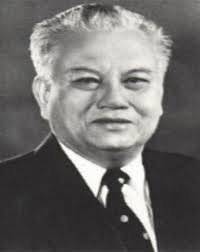 In 1955, the Lao People’s Revolutionary Party was created - a communist organization that worked closely with like-minded people in neighboring North Vietnam. The creation of the NPLP owes a lot to Kayson Fomvihan. A person of mixed Vietnamese-Lao origin, Fomvihan, like Suphanouwong, in his youth was closely associated with Vietnam. He studied at the University of Hanoi, in 1942, he joined the Communist Party of Indochina. In the 1947 year, after the beginning of the armed confrontation in Laos, it was Fomvihan who led the partisan units operating in the north-east of the country and became the core of the future Lao People's Liberation Army.
In 1955, the Lao People’s Revolutionary Party was created - a communist organization that worked closely with like-minded people in neighboring North Vietnam. The creation of the NPLP owes a lot to Kayson Fomvihan. A person of mixed Vietnamese-Lao origin, Fomvihan, like Suphanouwong, in his youth was closely associated with Vietnam. He studied at the University of Hanoi, in 1942, he joined the Communist Party of Indochina. In the 1947 year, after the beginning of the armed confrontation in Laos, it was Fomvihan who led the partisan units operating in the north-east of the country and became the core of the future Lao People's Liberation Army. In 1957, Prince Souvanna Fume was able to normalize the relationship of the royal government with Pathet Lao. 19 November 1957 of the year he formed a government of national unity, in which representatives of Pathet Lao were invited - Suphanouwong and Fumi Wongwitch. Representatives of the Patriotic Front of Laos were elected to parliament. However, the process of resolving the situation in the country that began was not to the liking of the United States of America and France, who saw the rise of communist influence in the country in the inclusion of representatives of Patet Lao in the government and parliament. The Americans began to lobby for the resignation of Souvanna Fouma and the coming to power in Laos of right-wing politicians, focused on the termination of cooperation with the left and the strengthening of the traditional monarchy. Meanwhile, in 1959, the long-term ruler of Laos, King Sisavang Wong, passed away. On the throne he ascended his son Sawang Vathana. The death of the king was used by right-wing politicians to strengthen their positions. In one 1960 year alone, Laos experienced three military coups. The first coup occurred on the night of 8 on August 9. The commander of the parachute battalion, Captain Kong Le, forced King Sawang Vathan to appoint Prince Souvanna Foumou as prime minister of the country. At the same time, the right general Fumi Nosavan seized power in the province of Savannakhet. December 8 A revolt broke out in Vientiane on 1960, led by Colonel Kuprasit Abhay. In fact, power in the capital was in the hands of Prince Boon Um, the leader of the right group. The overthrown government leader Souvanna Fouma fled to neighboring Cambodia.
CIA and Royalists vs. Pathet Lao
During 1961, repeated attempts were made to stabilize the political situation in the country. A tripartite meeting was held between the princes Suwana Fouma, Souphanuwong and Boone Uma. At the same time, Souvanna Fouma was already more left-wing and allowed herself anti-American remarks. Naturally, Boone Um, supported by the United States CIA, was not going to allow left Suphanuwong and left-wing Suvannah Foume to get full power in Laos. The civil war was in full swing - government troops, controlled by Bun Umu, fought with the Lao People's Liberation Army. A truce followed only after 12 June 1962, the three princes managed to agree on the formation of a coalition government. Prince Souvanna Fouma led a coalition government, also taking several ministerial posts, including the post of minister of defense.
However, on April 1, 1963, Sufanuwong and his PFL associates left the Lao government. This was followed by another military coup, which was headed by the same Kuprasit Abhai, who collaborated with American intelligence agencies. The military managed to put pressure on the moderate leader, Suvanna Fumu, and the latter removed supporters of cooperation with the Patriotic Front of Laos from the country's government. Meanwhile, the country was gradually embroiled in an armed confrontation between the United States and Indo-Chinese Communists, which swept the whole of East Indochina. Since the territories controlled by the PFL were used by the Allied Front by North Vietnam to supply the National Liberation Front of South Vietnam, on May 17, 1964, the American aviation launched the bombing of Lao provinces controlled by PFL.
At the same time, the United States of America began to make tremendous efforts to destroy the communist movement in Laos. Preferring to act "by proxy", the Americans did not dare to direct land intervention in Laos. Moreover, the American public in 1960-ies quite "enough" and Vietnam, where thousands of American soldiers were killed. Therefore, the United States began to strengthen the modernization of the Lao Royal Army, which was entrusted with the main tasks of eliminating the communist threat in the country. First of all, the strength of the armed forces of small Laos was significantly increased - to 74,2 thousands of troops. Second, American military advisers were attached to the royal army. Financial and logistical assistance was provided to the Lao Royal Army. Under the full control of the CIA, a special army was formed under the command of General Wang Pao, numbering up to 30 thousands of troops. It was staffed, first of all, by representatives of the Miao people, called Hmongs in Laos.
Speaking in Austro-Asian languages, the Miao-Yao families, the Hmongs, once migrated to Laos from southern China and settled in high-mountainous areas, engaging in, among other things, opium poppy cultivation. Using the social backwardness of the Hmongs and interethnic contradictions with the Laotian population, the CIA agents managed to win over part of the tribal leaders to their side. Especially since the Hmongs already had the experience of many years of cooperation with the colonial authorities of France - many of them were in the service of the colonial troops.
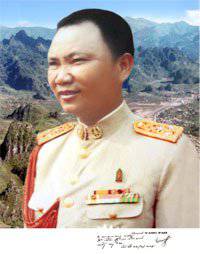 The leader of the Hmong army, Wang Pao, also came from the French colonial troops. He was born in 1929 in the family of the district chief and during the Second World War he served in the detachment recruited from the Hmong by the French Resistance and fighting with the Japanese invaders. After the war, the French enlisted Wang Pao as a lieutenant in the colonial forces. He served in Vietnam, and after the expulsion of the French from there, he continued to serve in the royal army of Laos, becoming the only Hmong to be promoted to major general. Under the leadership of Wang Pao, the Hmong units, trained by instructors of the American commandos, constituted one of the main shock forces in the struggle against the communist guerrillas of the PFL. In turn, the regular army of the Democratic Republic of Vietnam fought on the side of the latter. Assistance with armament and technical equipment "Pathet Lao" received from the Soviet Union.
The leader of the Hmong army, Wang Pao, also came from the French colonial troops. He was born in 1929 in the family of the district chief and during the Second World War he served in the detachment recruited from the Hmong by the French Resistance and fighting with the Japanese invaders. After the war, the French enlisted Wang Pao as a lieutenant in the colonial forces. He served in Vietnam, and after the expulsion of the French from there, he continued to serve in the royal army of Laos, becoming the only Hmong to be promoted to major general. Under the leadership of Wang Pao, the Hmong units, trained by instructors of the American commandos, constituted one of the main shock forces in the struggle against the communist guerrillas of the PFL. In turn, the regular army of the Democratic Republic of Vietnam fought on the side of the latter. Assistance with armament and technical equipment "Pathet Lao" received from the Soviet Union. Throughout the 1960-x - the first half of the 1970-x. Laos became the scene of a fierce armed confrontation between the capitalist and socialist blocs. The United States of America stood behind the royalists and the army of Wang Pao, and communist Vietnam and the Soviet Union stood behind Patat Lao. The civilian population of Laos suffered the most from what was happening. At least three million tons (!) Of bombs were dropped on the territory of this small Asian country. If you count this number relative to the area of the country, you get ten tons of bombs for each square kilometer of Laotian territory. Naturally, thousands of residents of Laos were the victims of yet another US attempt to impose "peace and democracy" on foreign soil.
When it became obvious that the Lao Left was unable to cope with the royal army and the WIA Pao’s troops prepared by the CIA, the Vietnamese army came to help like-minded people. The armed forces of the DRV in January 1968 conducted the first independent operation in Lao territory. In turn, American aviation begins to heavily bomb the “Ho Chi Minh trail,” along which assistance to South Vietnamese communists was delivered through Laotian territory. The Hmong units of Wang Pao, who occupied the Jugs Valley in the summer of 1969, were also thrown onto the “Ho Chi Minh trail”. However, as early as next year, the North Vietnamese army managed to recapture the valley from the forces of Wang Pao. The powerful potential of American aviation was used against the Vietnamese and Lao communists. At the same time, the United States pushed South Vietnam to attack the south-eastern regions of Laos. However, the South Vietnamese troops could not solve the task and were ousted from the Lao territory by the communist formations.
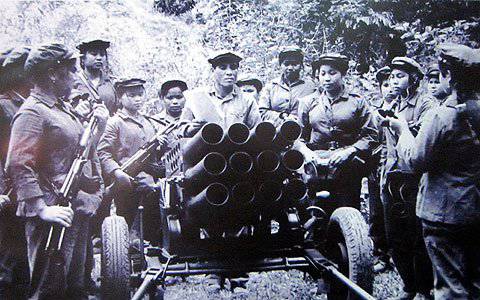 By 1972, virtually the whole of Laos was under the control of the Patriotic Front. In this situation, the royal government had no choice but to negotiate with the Communists. In 1973, the next Vientiane agreements were concluded, which provided for the formation of a coalition government. However, it was clear that in the new military-political scenario such a government would no longer be able to exist as an organ of equal partners in importance. The superiority of the Communists by this time was too obvious. At the end of May 1975, the Patet Lao armed detachments set about disarming government forces. The fall of South Vietnam and the coming of the Khmer Rouge to power in neighboring Cambodia contributed to the further activation of Lao communists. 23 August 1975, the armed forces of "Patet Lao" entered Vientiane. In November, 1975, mass laurels began throughout the country in support of the abolition of the monarchy, inspired by the Communists. 2 December 1975, the king of Laos, Savang Vathana abdicated the throne. It was proclaimed the creation of the Lao People’s Democratic Republic. The first president of the Lao PDR National Congress of the People’s Representatives of Laos elected Souphanouvong's “red prince”. So, with the support of communist Vietnam, left forces won in Laos. The United States suffered a second defeat in Indochina - this time in Laos.
By 1972, virtually the whole of Laos was under the control of the Patriotic Front. In this situation, the royal government had no choice but to negotiate with the Communists. In 1973, the next Vientiane agreements were concluded, which provided for the formation of a coalition government. However, it was clear that in the new military-political scenario such a government would no longer be able to exist as an organ of equal partners in importance. The superiority of the Communists by this time was too obvious. At the end of May 1975, the Patet Lao armed detachments set about disarming government forces. The fall of South Vietnam and the coming of the Khmer Rouge to power in neighboring Cambodia contributed to the further activation of Lao communists. 23 August 1975, the armed forces of "Patet Lao" entered Vientiane. In November, 1975, mass laurels began throughout the country in support of the abolition of the monarchy, inspired by the Communists. 2 December 1975, the king of Laos, Savang Vathana abdicated the throne. It was proclaimed the creation of the Lao People’s Democratic Republic. The first president of the Lao PDR National Congress of the People’s Representatives of Laos elected Souphanouvong's “red prince”. So, with the support of communist Vietnam, left forces won in Laos. The United States suffered a second defeat in Indochina - this time in Laos. Victory of the revolution
Since then, for almost forty years, Laos has remained a socialist state in which the Lao People’s Revolutionary Party is in power. The “Red Prince” Suphanouvong, whose name is closely associated with the coming to power of the communist forces, served as president of the Lao PDR on the fact of the year before 1986, and formally until the year of 1991. In 1986, due to health reasons, Sufanuvong stopped performing presidential duties, and in 1991, he finally left the presidency. The leader of the national liberation movement of Laos died in 1995, at the age of 85. By the way, a prominent political figure who devoted most of his life to the struggle for the independence of his country from the French colonialists, the American imperialists and the puppet royal regime, had eleven children born in marriage with his Vietnamese wife.
The post of Prime Minister of the Lao People’s Democratic Republic was won by 55-year-old Kayson Fomvihan, a veteran of the national liberation movement, a partisan and a communist who also held the post of general secretary of the Central Committee of the Lao People’s Revolutionary Party. In 1991, Fomvihan replaced Souphanuvong as president of the country, but health undermined by the guerrilla war for many years made itself felt, and only a year later in the presidency Cason Fomvihan died at the age of 72. He was replaced by Nukhak Poomsavan (1910-2008), another legendary revolutionary and partisan commander who was one of the founders of the Lao Issara movement in 1945. In 1998-2006 The presidency of Laos was held by General Khamtay Siphandon (born 1924) - also a member of the guerrilla war, one of the prominent leaders of the Pathet Lao movement.
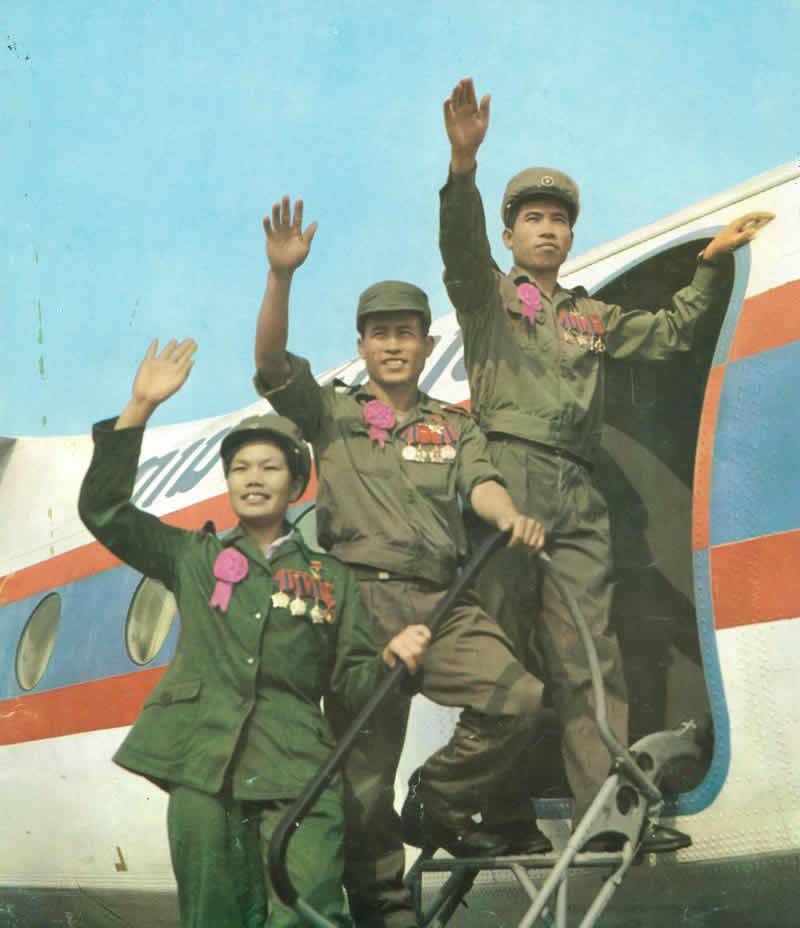
For a long time, Laos was in the orbit of the political influence of the Soviet bloc. At the same time, Laos was primarily a regional partner of Vietnam, which served as the “senior comrade” of the Lao PDR. After the USSR collapsed and the socialist countries of Indochina lost their Soviet support, forced transformations began in the political life of Vietnam and Laos. Nevertheless, up to the present, Laos remains a socialist state with a one-party political system. The only political party in the country remains the Lao People’s Revolutionary Party (LPRP), which professes a communist ideology. Its secretary general simultaneously holds the presidency of the Lao People’s Democratic Republic. Currently he is 78-year-old Lieutenant-General Choummaly Sayason.
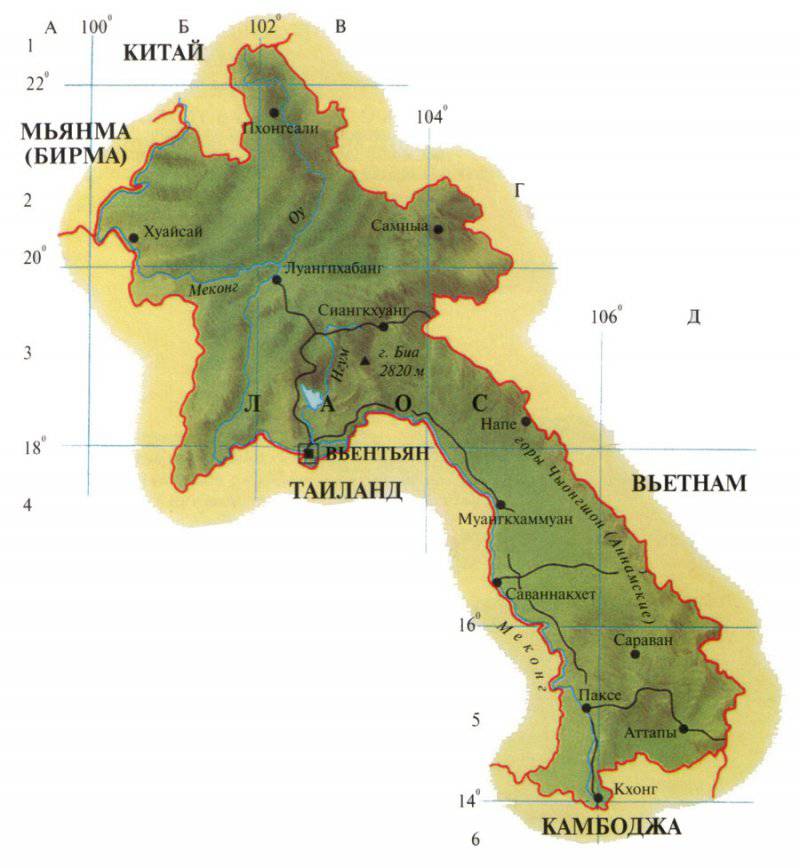
Information